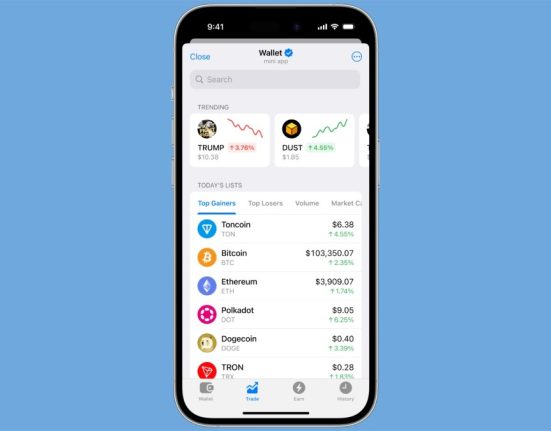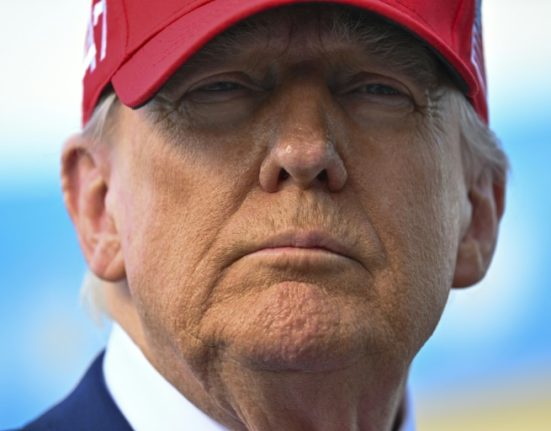If the Securities and Exchange Commission’s approval of spot Bitcoin exchange-traded funds represented a watershed moment for cryptocurrency, the arrival of spot Ether ETFs on Wall Street could be nothing short of revolutionary.
In a move that caught even the most bullish crypto cheerleaders off guard, U.S. regulators have cleared the way for ETFs for the world’s most popular altcoin, Ether (ETH), the native crypto of the Ethereum decentralized blockchain platform.
SEC Chairman Gary Gensler told CNBC on June 5 that spot Ether ETF approvals will take some time, a nuance misunderstood by many investors who believed they would be able to buy and sell spot Ether ETFs in a matter of weeks.
Despite a long-standing belief that the SEC holds a more skeptical stance over crypto, on May 23 the regulator approved 19b-4 filings for eight spot Ether ETFs, including Grayscale Ethereum Trust and Bitwise Ethereum ETF on NYSE Arca; iShares Ethereum Trust on Nasdaq; and VanEck Ethereum Trust, 21Shares Core Ethereum ETF, Invesco Galaxy Ethereum ETF, Fidelity Ethereum Fund and Franklin Ethereum ETF on CBOE BZX. In early June, NYSE Arca also proposed a rule change to allow the listing of ProShares Ethereum ETF. None of these ETFs are available to trade yet, as the SEC still must give the nod to the funds’ S-1 registration filings.
Although spot Ether ETFs are unlikely to emulate spot Bitcoin (BTC) ETFs in terms of inflows upon launch, the weight of the SEC’s decision to approve one of the most functional projects in the crypto ecosystem is apparent. Though there are ETFs that offer managed exposure to Ether futures contracts, direct exposure to Ether will be new.
While Bitcoin’s status as the world’s first and oldest cryptocurrency has helped to cement its popularity, more than 10,000 projects have been developed on Ethereum’s blockchain, and the approval of Ether ETFs can help to generate far more mainstream acceptance of the cryptocurrency and the many crypto-centric innovations it’s helped to grow.
With this in mind, let’s take a deeper look at the contrasts between spot Bitcoin ETFs and spot Ether ETFs and why they shouldn’t be seen as two sides of the same coin.
Spot Ether ETF vs. Spot Bitcoin ETF
There are several important differences between spot Bitcoin ETFs and the spot Ether ETFs investors expect to be formally greenlit in the coming months.
First, in terms of assets under management, Bitcoin ETFs are set to far outweigh those of Ether ETFs. As of June 12, the AUM for spot Bitcoin ETFs totaled $59.4 billion, representing an increase of more than double that of Grayscale Bitcoin Trust’s $28.7 billion in AUM at the beginning of trading in January.
By contrast, Grayscale Ethereum Trust’s AUM at the end of May were $11 billion. It’s also unlikely that spot Ether ETFs will be inundated with the same opening-day inflow of $655.2 million that Bitcoin ETFs experienced.
This is because Ethereum is a more complex entity than Bitcoin, and is more difficult to value for investors. While Bitcoin’s older blockchain framework isn’t optimized for functionality in the same way as its younger counterparts, Ethereum is an example of how cryptocurrency can represent far more than a simple store of value.
For starters, Ether offers annual yield through staking, although this feature won’t be available for ETF holders. Furthermore, Ethereum’s blockchain has become a highly functional ecosystem for hosting decentralized finance, or DeFi, projects that can focus on peer-to-peer lending and offer advanced blockchain-based open finance services.
Ethereum’s blockchain has also become a popular framework for the burgeoning non-fungible token landscape, and many NFTs today are bought and sold using Ether.
Both cryptocurrencies are fundamentally different on a technical level, too. Bitcoin operates on a proof-of-work (PoW) mining mechanism and a capped total supply of 21 million coins to impose a significant level of scarcity that has drawn comparisons to digital gold. Ether has no such circulation cap, and its proof-of-stake (PoS) mechanism for minting new coins requires far less computational power and can mint far more Ether.
As a result, Ether’s market capitalization of $419 billion is far lower than Bitcoin’s $1.3 trillion (as of June 13), but the more technical capabilities of Ethereum’s blockchain have the potential to draw investor interest as it hosts more innovative DeFi projects that could drive digital transformation throughout the financial sector and beyond.
The New Spot Ether ETFs Explained
An SEC memorandum laid out the authorization for NYSE Arca, Nasdaq and CBOE BZX to list spot Ether ETFs. The new arrivals include:
Grayscale Ethereum Trust
Grayscale Investments filed to convert its Grayscale Ethereum Trust (ticker: ETH), one of the first securities solely focused on Ether, to a spot-price ETF. Despite Grayscale withdrawing its application for the Grayscale Ethereum Futures Trust ETF on May 3, the SEC’s approval for NYSE Arca to list the Ethereum Trust signifies the institution’s foray deeper into the world of crypto, following its Bitcoin Trust ETF, which was until recently Wall Street’s largest crypto ETF with $19.1 billion in assets under management. The largest is now iShares Bitcoin Trust (IBIT), with $20.6 billion in AUM as of June 12.
Bitwise Ethereum ETF
Bitwise Asset Management is a crypto-focused pioneer that already made waves with the launch of its Bitcoin ETF. The institution has built a reputation for supporting next-generation technology, and its launch of a Web3 ETF in late 2022 underlines its commitment to exciting new innovations.
Ethereum already has some exposure throughout Bitwise’s suite of services, like the firm’s 10 Crypto Index Fund (BITW), which has offered investors returns of more than 50% for the first half of 2024 alone. Its Ethereum ETF is set to be listed on NYSE Arca.
iShares Ethereum Trust
After becoming the world’s largest cryptocurrency ETF provider with its iShares Bitcoin Trust ETF (IBIT) in recent weeks, forward-thinking BlackRock Inc. (BLK) is expected to become a market leader when its spot Ethereum ETF launches on the Nasdaq.
The firm already made amendments to its iShares Ethereum Trust on May 29 ahead of its pending launch, and the spot ETF is likely to be hard to beat for investors.
VanEck Ethereum Trust
The VanEck Ethereum Trust ETF has been a leader in this field since news of VanEck’s intentions broke in September 2023. VanEck has built a reputation for offering access to untapped markets, and its decision to focus on Ether ETFs is a major step toward more Wall Street acceptance of cryptocurrency.
Invesco Galaxy Ethereum ETF
Following the Invesco Galaxy Bitcoin ETF (BTCO), the Ethereum iteration will champion the same partnership between global ETF provider Invesco Ltd. (IVZ) and Web3 leader Galaxy Asset Management. The team will use its experience with direct exposure to digital assets to inform the fund’s strategy.
21Shares Core Ethereum ETF
This ETF’s initial application was initially sought by two companies, 21Shares and Ark. However, the two companies have decided to end their partnership, and 21Shares has filed an updated application, rebranding from Ark 21Shares Ethereum ETF to 21Shares Core Ethereum ETF.
Fidelity Ethereum Fund
Approved to list on CBOE BZX, the Fidelity Ethereum Fund seeks to build on the success of Fidelity Wise Origin Bitcoin Fund (FBTC), a spot BTC ETF with $11.9 billion in AUM.
Franklin Ethereum ETF
Another CBOE BZX listing is the Franklin Ethereum ETF. As one of the first ETFs to announce its associated fees, Franklin has set a competitive annualized rate of 0.19% of net asset value. Because of its relatively low cost, many analysts have suggested that the firm has sought to spark a fee war by playing its cards early.
Leveraged, Inverse ProShares Ether ETFs Hit the Market
On June 7, ProShares launched two funds – a 2x leveraged and 2x inverse ETF – tied to the Bloomberg Ethereum Index and listed on NYSE Arca. The leveraged ETF, ProShares Ultra Ether ETF (ETHT), targets a double return of whatever the index does during the day, whereas the inverse ETF, ProShares UltraShort Ether ETF (ETHD), provides the opposite of that. ProShares also makes leveraged and inverse exposure to Ether futures available through two other ETFs, and it offers ETF exposure to a combination of Bitcoin and Ether futures as well, according to VettaFi.
How Will Spot Ether ETFs Impact Crypto Prices?
Because Ethereum’s blockchain hosts more than 10,000 crypto projects, the SEC’s approval of a spot Ether ETF will have a major impact on the many altcoins that make up the cryptocurrency ecosystem.
With Bitcoin’s crypto market share at about 54%, the arrival of a spot Bitcoin ETF carried a significant impact on the ecosystem at scale. The arrival of the spot Ether ETF, however, is likely to have a more profound effect on the remaining 46% of assets that make up the rest of the market.
Acceptance helps deliver more regulatory clarity to the Ethereum blockchain, which in turn drives competition and encourages innovation. This paves the way for more small-cap projects to emerge and generates market momentum, making altcoins more visible to Wall Street and the financial sector, and ultimately supporting higher crypto prices.
Could Spot Ether ETFs Offer a Boost to Spot Bitcoin ETFs?
The arrival of spot Ether ETFs is unlikely to have a direct impact on the price of Bitcoin. BTC itself is expected to drive the crypto market higher as a result of its anticipated post-halving event rally, which tends to deliver a bull market every four years.
That’s not to say that Ether ETFs won’t help Bitcoin ETFs grow, as crypto ETFs are adopted into the mainstream. Approval of the more technical Ethereum could also help institutions and individual investors understand cryptocurrencies better.
Why Was Staking Left Out of Updated Filings?
One major omission from spot Ether ETF filings was the cryptocurrency’s staking framework. This comes after plenty of uncertainty over whether Ether is a security or commodity.
Ethereum staking works when investors can earn interest by locking up Ether on its blockchain for a predetermined period. This, according to the SEC, would classify staking-as-a-service as the offering of an unregistered security and has previously led to the commission taking out lawsuits against exchanges like Coinbase Global Inc. (COIN) and Kraken for allowing its users to stake their own coins.
Grayscale and other ETF applicants were hopeful that they could add staking features to their ETFs, but they ultimately removed this aspect of their proposals when it became a sticking point for the SEC.
This core feature of Ethereum has been a popular way for users to build a passive income, however, and investors could be less enthusiastic about embracing spot Ether ETFs without staking.
Building on a Landmark Year for Crypto
Because of Ethereum’s greater functionality and more intrinsic link to cryptocurrencies as a whole, the final approval of spot Ether ETFs by the SEC, expected this summer, has the potential to eclipse that of January’s spot Bitcoin ETF approval in terms of wider crypto acceptance on Wall Street.
While the loss of staking in the proposals will be disheartening for some investors, the flexibility of access to the world’s largest altcoin and blockchain will hold plenty of appeal for crypto-facing institutions. It could be a major moment that pushes the sprawling DeFi and NFT ecosystem further into the mainstream, unlocking crypto’s potential across a range of sectors in the process.







